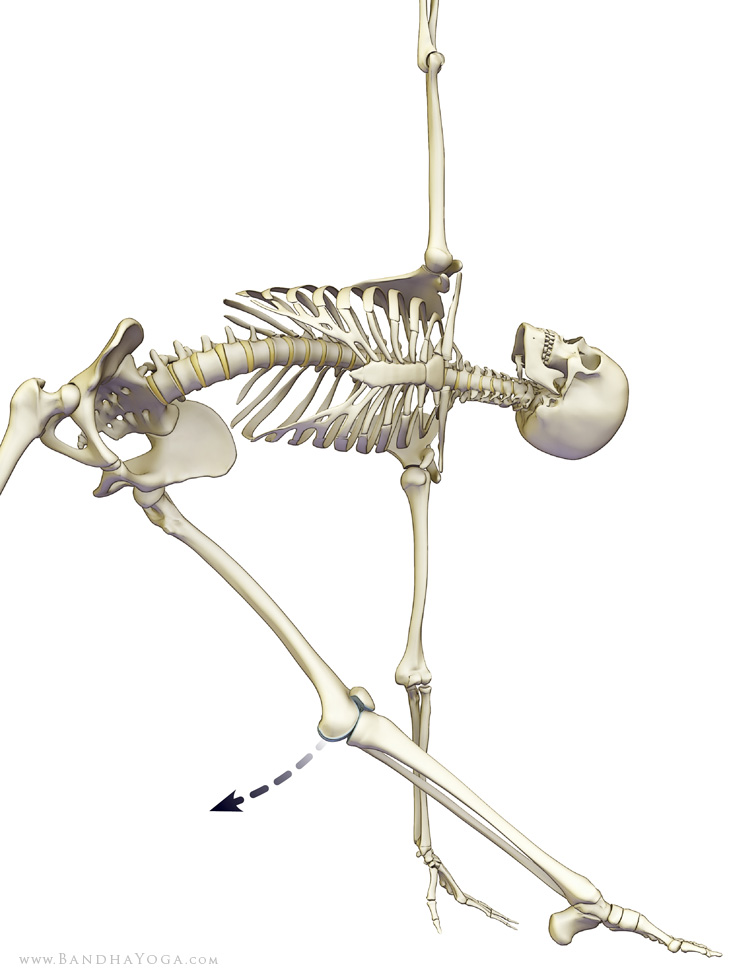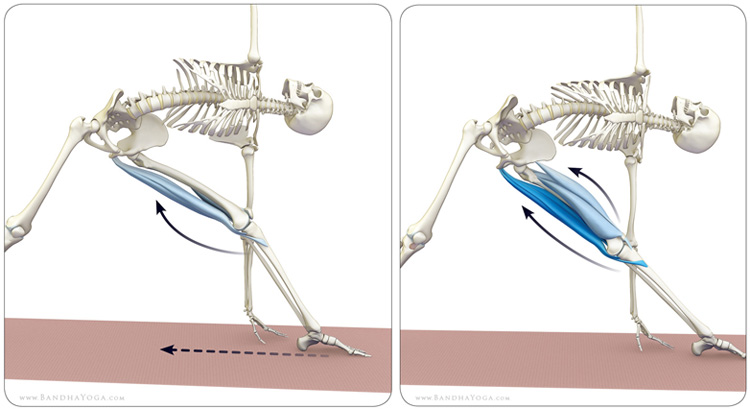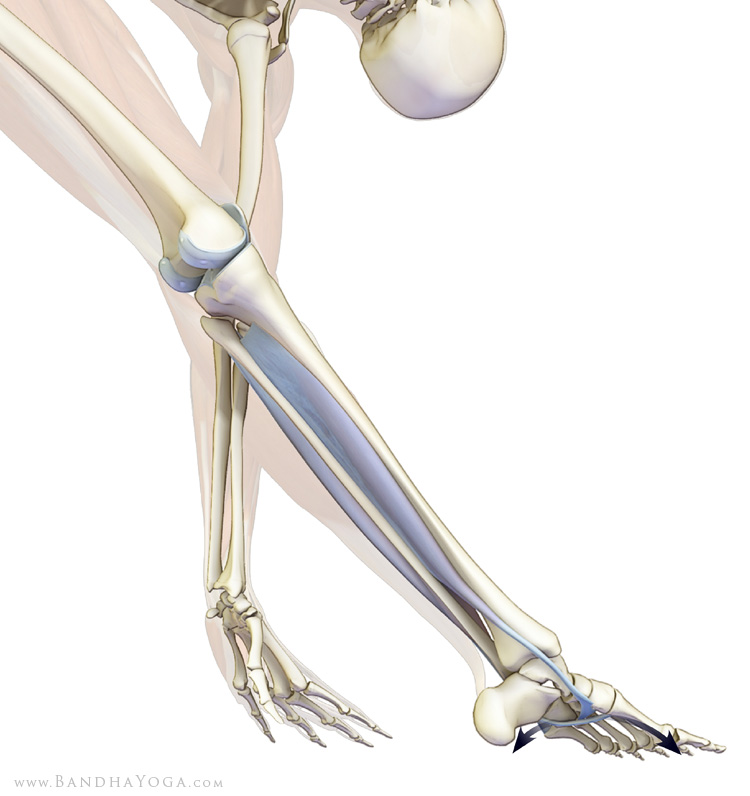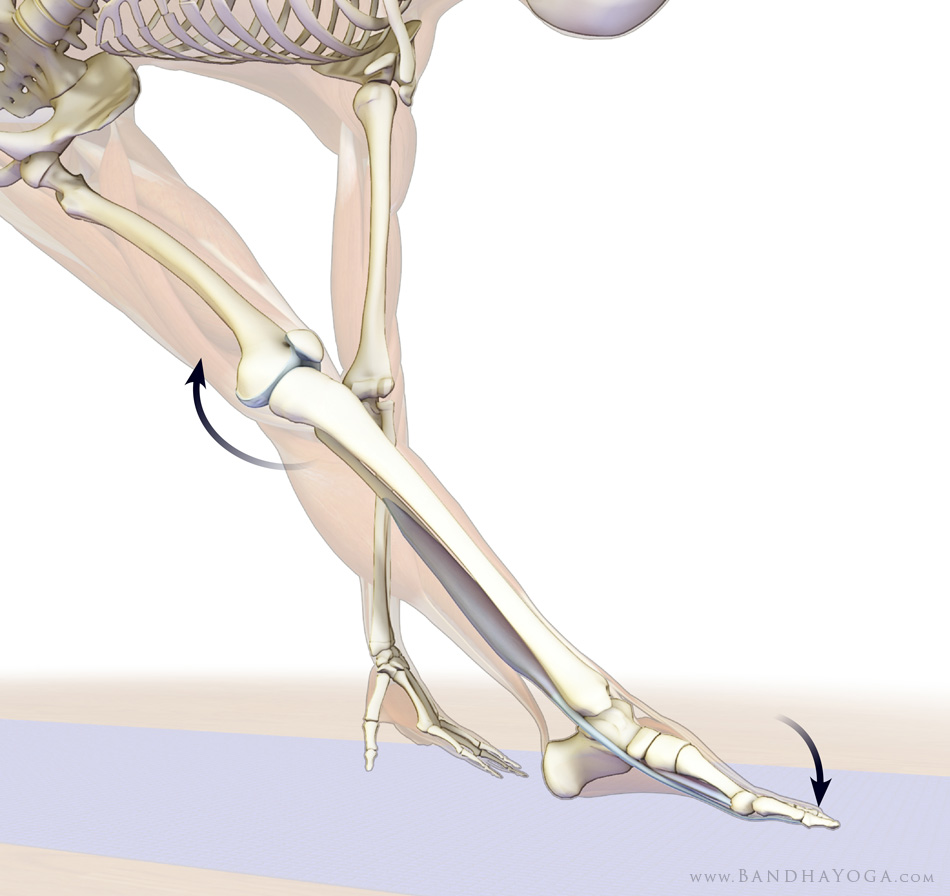Scientific Keys
A Tip for Helping Hyperextended Knees in Yoga
 Trikonasana
Trikonasana
We are sometimes instructed to "hug the thigh bone" in a yoga class. This is an example of co-activation. You can use a series of cues that isolate the different muscles surrounding a bone in order to achieve this effect. Apply this technique to correct hyperextension of the knee. Begin by isolating the hamstrings. The cue for this is to slightly bend the knee and attempt to "scrub," or drag, the front foot toward the back, as shown. The mat will prevent the foot from moving, but the hamstrings will engage. The hamstrings are knee flexors and contracting them prevents hyperextension. Then, maintaining tension in these muscles, engage the quadriceps to straighten the knee. From this image you can see that this agonist/antagonist muscle group, the hamstrings and quadriceps, surrounds the femur and crosses the knee joint. Co-contracting these muscles creates the "hug" that we sometimes hear about and prevents hyperextension of the knee in the pose.


Co-activate the muscles that evert and invert the foot to spread the weight evenly across the sole. Activate the peroneus longus and brevis to press the ball of the foot into the mat. Then spread the force across the bottom of the foot to the outside edge by engaging the tibialis posterior muscle. Read more about these important muscles and how to use them in Dog Pose by
clicking here.

You can also use the big toe flexors—the flexors hallucis longus and brevis—to aid in counteracting knee hyperextension in Trikonasana. First, follow the cue outlined above for co-contracting the quadriceps and hamstrings to align the femur and tibia. Then press the fleshy part of the big toe into the mat. This engages the big toe flexors. Because the floor prevents the toe from fully flexing, this force is transmuted to drawing the knee forward and out of hyperextension. In effect, it synergizes the attempt to drag the front foot towards the back one.
Read more about the big toe flexors and how you can use them to counteract the pelvis drifting back in standing forward bends and one-legged standing poses such as Ardha Chandrasana and Warrior III.
Click here to see our blog,
The Daily Bandha.
Namasté,
Ray and Chris




